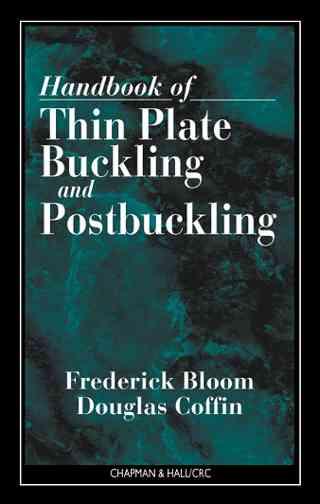Handbook of Thin Plate Buckling and Postbuckling
1.1 Buckling Phenomena
Problems of initial and postbuckling represent a particular class of bifurcation
phenomena; the long history of buckling theory for structures
begins with the studies by Euler [1] in 1744 of the stability of flexible
compressed beams, an example which we present in some detail below,
to illustrate the main ideas underlying the study of initial and postbuckling
behavior.

Although von Karman formulated the equations for
buckling of thin, linearly elastic plates which bear his name in 1910 [2],
a general theory for the postbuckling of elastic structures was not put
forth until Koiter wrote his thesis [3] in 1945 (see, also, Koiter [4], [5]);
it is in Koiter’s thesis that the fact that the presence of imperfections
could give rise to significant reductions in the critical load required to
buckle a particular structure first appears. General theories of bifurcation
and stability originated in the mathematical studies of Poincar´e
[6], Lyapunov [7], and Schmidt [8] and employed, as basic mathematical
tools, the inverse and implicit function theorems, which can be used
to provide a rigorous justification of the asymptotic and perturbation
type expansions which dominate studies of buckling and postbuckling
of structures. Accounts of the modern mathematical approach to bifurcation
theory, including buckling and postbuckling theory, may be
found in many recent texts, most notably those of Keller and Antman,
[9], Sattinger [10], Iooss and Joseph [11], Chow and Hale [12], and Golubitsky
and Schaeffer [13], [14]. Among the noteworthy survey articles
which deal specifically with buckling and postbuckling theory are those
of Potier-Ferry [15], Budiansky [16], and (in the domain of elastic-plastic
response) Hutchinson [17]. Some of the more recent work in the general
area of bifurcation theory is quite sophisticated and deep from a
mathematical standpoint, e.g., the work of Golubitsky and Schaeffer,
Download
*